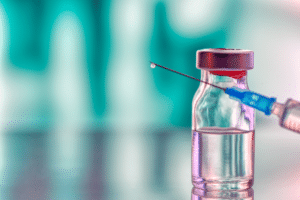Preparing for an Investigational New Drug (IND) application represents a key milestone for First-In-Human (FIH) studies.
For many drug developers, especially those newer to the field, navigating this process can be complex. To simplify this journey, we dive into the essentials of IND-enabling testing, focusing on core toxicology studies and strategic planning to ensure a clear pathway.
IND-Enabling Testing
At its core, IND-enabling testing ensures the safety of new drugs. This process includes a series of standardized studies on pharmacology, toxicokinetics, and genotoxicity, as specified by the Food and Drug Administration (FDA) and ICH M3. These studies are crucial for predicting potential safety issues and estimating effective starting doses for clinical trials.
Core Toxicology Studies
Toxicology studies are the backbone of your IND application, offering insights into the drug’s safety profile through:
- General Toxicology: How does your drug play out in the body over time? Single and repeated doses tell you the maximum you can go without adverse effects.
- Reproductive Toxicology: It’s all about understanding the impact on fertility and early development to postnatal development.
- Safety Pharmacology: This is where you see the drug effects on vital organ systems, spotlighting any potential toxicities.
- Toxicokinetic & Pharmacokinetic Studies: Get to know how the drug is absorbed, distributed, metabolized, and excreted by the body
- Genotoxic Studies: Investigating if the drug could cause genetic mutations or chromosomal abnormalities.
Each of these studies must be tailored to the specific molecule, indication, and clinical plan. This customization underscores the importance of strategic planning and collaboration with a knowledgeable partner.
Planning for IND Success
Given the complexity of toxicology testing, thorough planning is indispensable. Here are key strategies to ensure your IND application is on the right path:
- Start Early: The earlier, the better. If you start planning and testing early, you will have an advantage, as the preparation for the IND can be long.
- Selecting the right partner with due diligence: Partnering with a preclinical safety assessment laboratory provides essential support. A suitable partner is an extension of your team. They’re your guide, helping you navigate with expertise. Take your time to find a partner who is a good fit for you, who knows the business and has a good track record. It’s also about building a relationship and decreasing the risks linked to regulatory unfamiliarity and inexperience.
- Engage with the regulatory authorities: Scheduling a pre-IND meeting with the FDA is critical for aligning your testing program with regulatory expectations. This step ensures your studies are adequately designed to meet the specific needs of your drug development program.
Key Takeaways
Preparing for an IND application is a critical, yet complex step, in the drug development process. It’s about safety, strategy, and partnership. By understanding the essential toxicology studies required, starting planning early, and choosing the ideal lab partner, you can expect a more seamless process.
With a 40+ year history and numerous IND studies conducted every year, we can provide the experience and expertise needed to guide you through your IND enabling activities.
If you have any thoughts or questions about IND-enabling services offered by Scantox, please contact us. Thank you!









